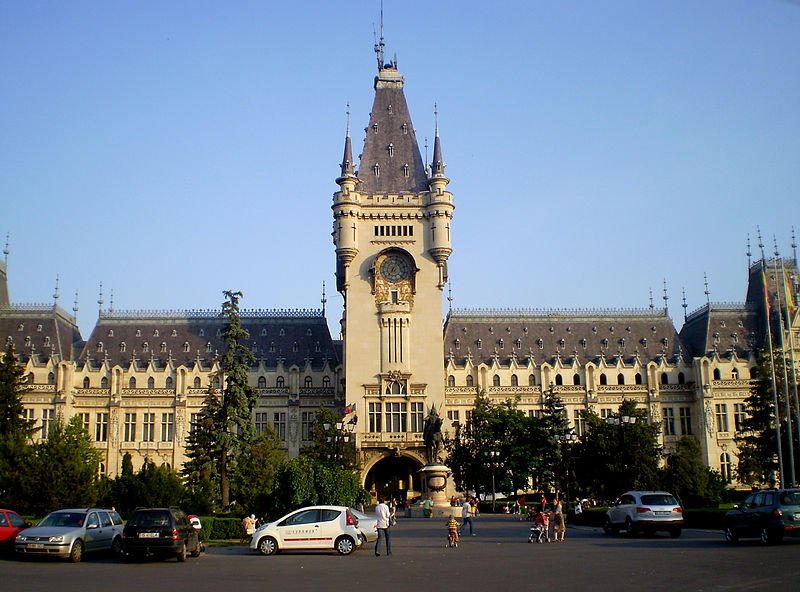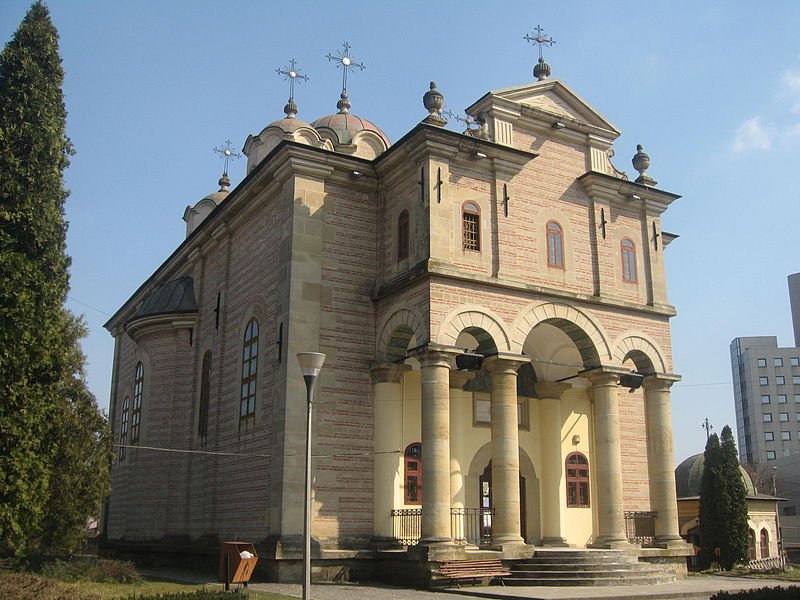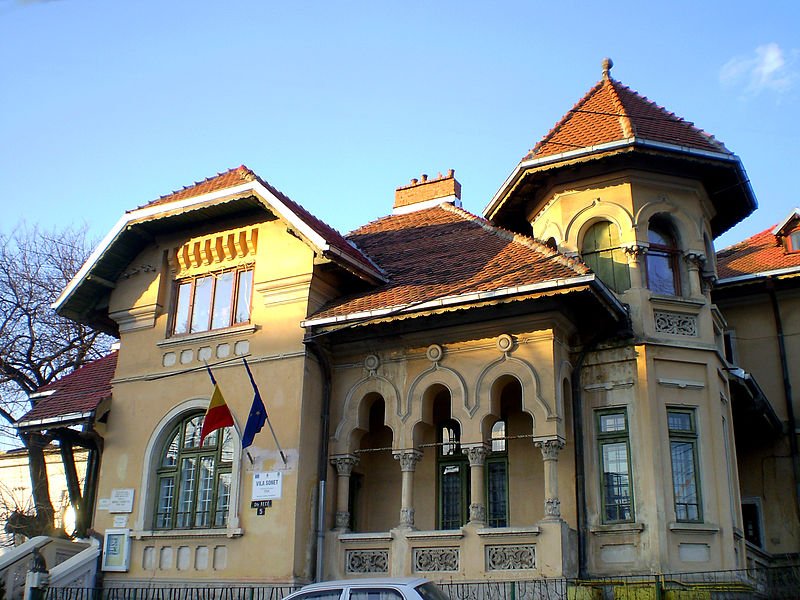 Palace of Culture, Iaşi
Palace of Culture, IaşiSource: https://commons.wikimedia.org/wiki/File:RO_IS_Iasi_,_Palace_of_Culture_2_.JPG
Author: Argenna

Iaşi is located on the Bahlui River between the Iaşi Ridge anhd Jijia Plain. It experiences a humid continental climate with warm, wet summers and cold, dry winters. July is the warmest month, registering an average high temperature of 27°C (80°F). January is the coldest month with average low temperature of -7°C (19°F). June is the wettest month, receiving 101.6 mm (4 in) of rainfall.
There is evidence of human habitation in the area around Iaşi going back to the prehistoric age. The present city was first mentioned in 1408, in a document on trading privileges. It became the capital of Moldavia in 1564, when Prince Alexandru Lăpuşneanu relocated it from Suceava, and remained the Moldavian capital until 1859. Between 1859 and 1862, both Iaşi and Bucharest served as de-facto capitals of the United Principalities of Moldavia and Wallachia. When the union was renamed Romania, the capital was established at Bucharest.
 Barboi Church, Iaşi
Barboi Church, IaşiSource: https://commons.wikimedia.org/wiki/File:Biserica_Barboi8.jpg
Author: Cezar Suceveanu
Iaşi had a sizable Jewish community which comprised a third of its population by the mid-19th century. It was the home of the first-ever Yiddish-language newspaper, and was the first place of a number of prominent Jews, particularly those in the theater and music scene.
As in elsewhere, the Jews in Iaşi suffered from the Holocaust in the Second World War. It claimed the lives of one third of the Jewish Population. After the Second World War, there were some 38,000 Jews in Iaşi. Due to massive emigration to Isreal, the numbers have dropped sharply to just between 300 to 600 today.
 Mihai Codreanu Memorial House, Iaşi
Mihai Codreanu Memorial House, IaşiSource: https://commons.wikimedia.org/wiki/File:Ia%C5%9Fi_,_Memorial_House_%E2%80%9EMihai_Codreanu%E2%80%9C_(Sonnet_Villa)1.2.jpg
Author: Argenna

Visiting Iaşi
You can fly to Iaşi, arriving at the Iaşi International Airport (IAS), one of the oldest airports in Romania. It receives flights from Bucharest, Timişoara and Vienna.You can also reach Iaşi by train from Bucharest and Budapest. There are also mini-bus services to Iaşi from Bucharest. There's one direct from the Bucharest international airport.
Places of Interest in Iaşi
- Dosoftei House
Historic building where the Metropolitan Bishop Dosoftei settled the second typography of Moldavia in 1679. - Golia Monastery
Monastery dating to 1564 and rebuilt in the late-Renaissance style in 1650. It features Byzantine frescos and highly ornamented doorways. - Great Synagogue of Iaşi
Built in 1657, this is the oldest surviving synagogue in Romania and one of the oldest in Europe. - Palace of Culture
Constructed in 1906, this imposing building today houses four museums united under the umbrella of the Moldava National Museum Complex. It is listed on the National Register of Historic Monuments. - Roznovanu Palace
19th century building that hosted the Romanian government during the First World War. - Sfântul Nicolae Domnesc
A small yet beautiful church built by Stephen the Great in 1491, making it the oldest religious building in Iaşi today. It is near the Palace of Culture. - Trei Ierarhi Monastery
17th century monastery built when Iaşi was the Moldavian capital. It is noted for its architectural features combining Western achitectural elements with elements of Armenian, Georgian, Persian, Arabian and Ottoman styles. The monastery church is on the tentative list as a World Heritage Site. - Vasile Alecsandri National Theater
Neo-Classical style theater built in 1894, with elements of Baroque and Rococo.
 Latest updates on Penang Travel Tips
Latest updates on Penang Travel Tips
 Discover with Timothy YouTube Channel
Discover with Timothy YouTube Channel
 PG Food Channel
PG Food Channel
 Learn Penang Hokkien YouTube Channel
Learn Penang Hokkien YouTube Channel
 SojiMart Videos
SojiMart Videos
Latest from Discover with Timothy: Gurney Bay - what to see and do there
About this website

Hello and thanks for reading this page. My name is Timothy and my hobby is in describing places so that I can share the information with the general public. My website has become the go to site for a lot of people including students, teachers, journalists, etc. whenever they seek information on places, particularly those in Malaysia and Singapore. I have been doing this since 5 January 2003, for over twenty years already. You can read about me at Discover Timothy. By now I have compiled information on thousands of places, mostly in Peninsular Malaysia and Singapore, and I continue to add more almost every day. My goal is to describe every street in every town in Malaysia and Singapore.
Copyright © 2003-2024 Timothy Tye. All Rights Reserved.


 Go Back
Go Back